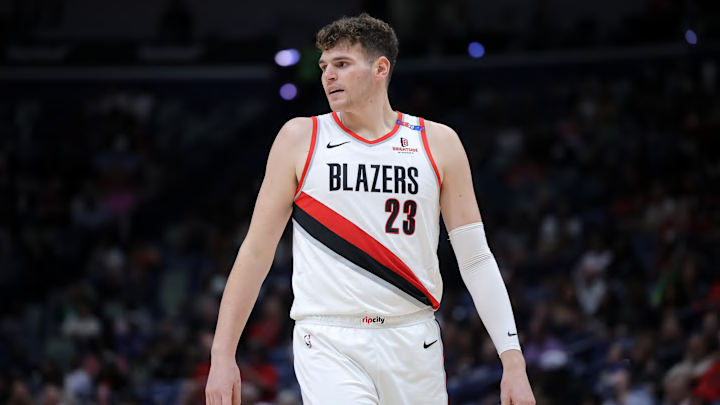The Portland Trail Blazers surprised some people when they used a first-round pick on Yang Hansen last month, but a closer look at Donovan Clingan’s rookie season helps explain the decision. Clingan arrived in Portland with plenty of hype surrounding his size and defensive ability, but he struggled to handle consistent heavy minutes over the course of the season.
That reality made it clear the Blazers would need another long-term option at center. And not just any backup, but someone who could offer a different dynamic. Hansen is now being positioned as that kind of player, and Portland’s thinking seems pretty clear.
Rather than hoping one big man develops into a complete star, the Blazers are seemingly comfortable embracing a split-center approach for now. Clingan is clearly the more polished defender, with better rim protection instincts and a clearer understanding of positional timing. But Hansen is more comfortable creating his own offense, and there is a fluidity to his game that Clingan does not quite have yet. The skillsets are different, and that might be exactly the point.
Clingan's skillset differs greatly from Hansen's
If there was any worry that selecting Hansen signaled a lack of faith in Clingan, it should probably be dismissed. This looks less like a panic pivot and more like a long-term insurance policy that offers upside on both ends of the floor. By pairing these two together on the roster, Portland has given itself more flexibility depending on matchups, foul trouble, and who is developing faster throughout the season.
It also makes sense from a development standpoint. Clingan will still likely be the defensive anchor when the Blazers need stops, and Hansen can be used to give the offense some punch in non-staggered minutes or when the second unit stalls out. The team does not have to rush one into a high-usage role if the other is thriving. Instead, they can take their time figuring out which center develops the more complete game over time.
Portland still has a long road back to contention, and this roster is nowhere near a finished product. But the decision to draft Hansen despite having Clingan on board speaks to a bigger theme in the front office’s strategy. They are not boxing themselves into just one path, and they are not ignoring lessons from the past year. Clingan’s limitations forced them to think differently, and Hansen’s arrival is the latest sign they are doing exactly that.
